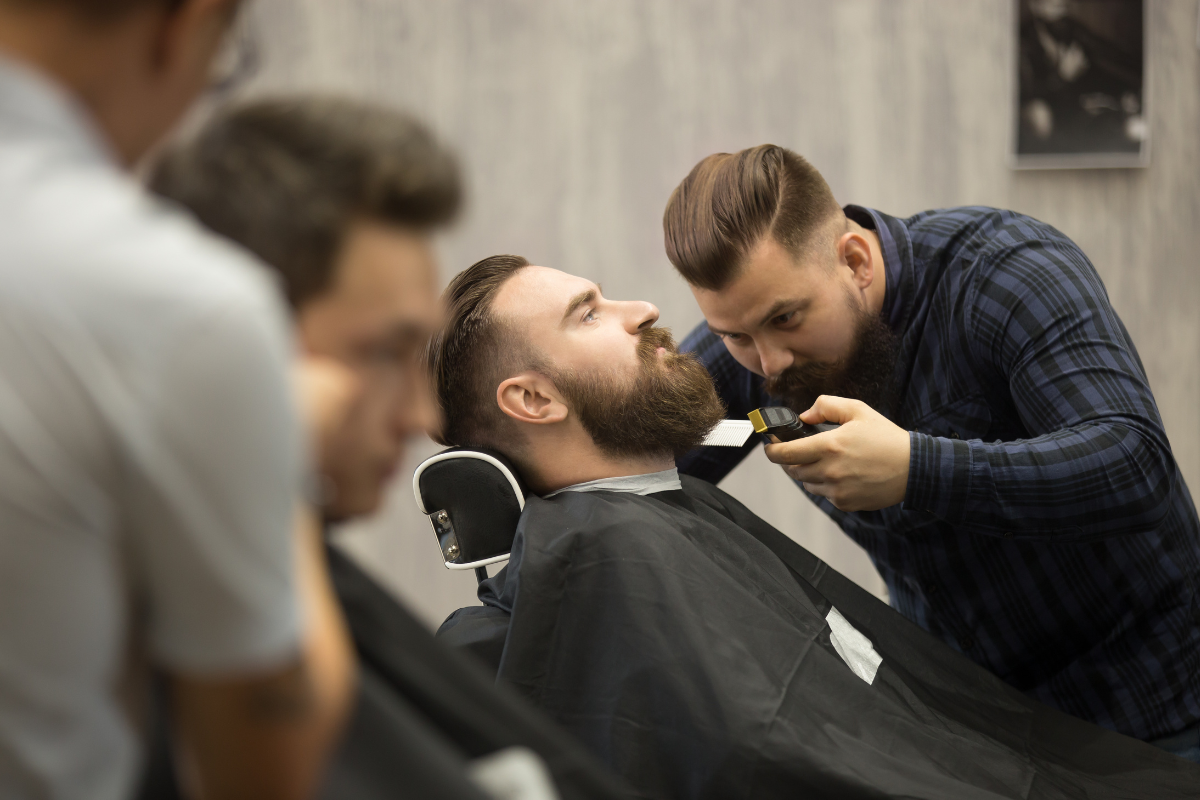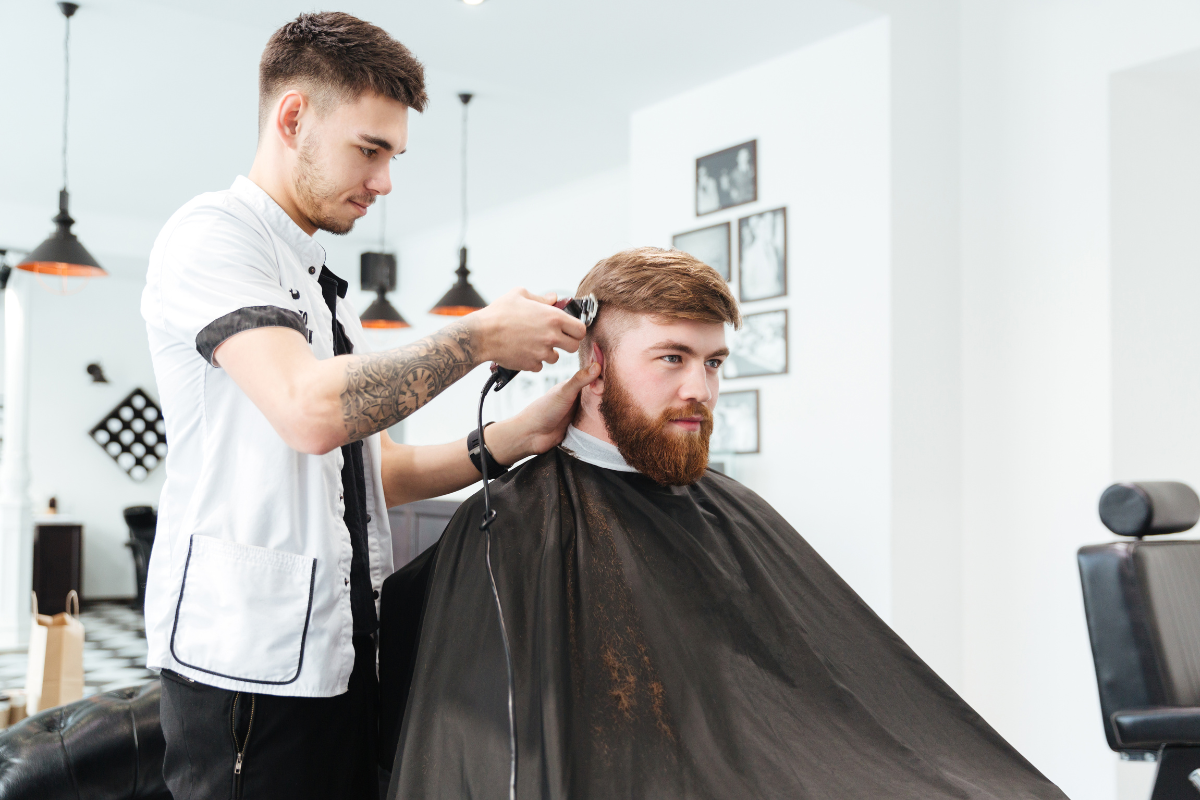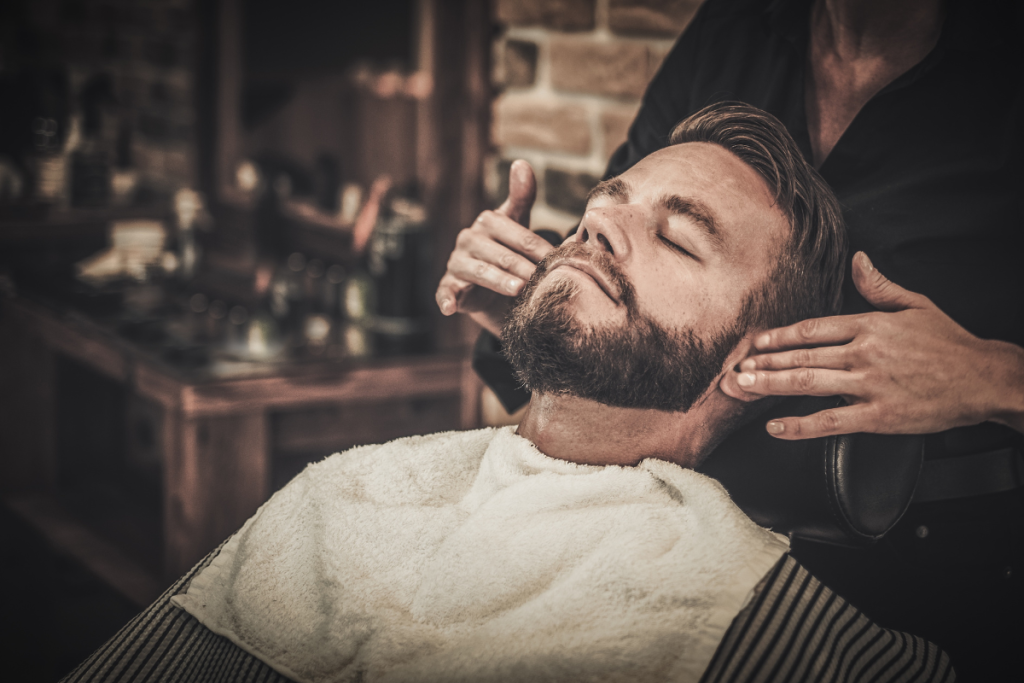For many Canadian men, sideburns are one of those grooming details that can either pull your look together or throw it off entirely. It might seem simple, but deciding how far down sideburns should go is something even regular clients at any barber who is experienced in cutting hair with this issue often ask. The answer isn’t one-size-fits-all. Factors like your face shape, hairstyle, beard (or lack thereof), and even the climate you live in all play a role.
If you’re wondering how to get your sideburns just right, read on we’ll cover everything from what affects sideburn length to maintenance tips that work for Canadian weather.
Understanding the Basics of Sideburn Length
Generally, sideburns should line up somewhere between the middle of your ear and the bottom of your earlobe. However, this is just a guideline your style and facial structure can influence this range. Here’s a simple way to think about it:
- Shorter sideburns (above the ear) work well with short hairstyles and clean-shaven faces.
- Mid-length sideburns (middle of the ear) suit most classic looks, whether you have a bit of stubble or a full beard.
- Longer sideburns (bottom of the ear and below) blend nicely with longer hairstyles and fuller beards.

The key is to ensure the sideburns create balance they should frame your face without drawing too much attention away from your hairstyle or beard.
Consider Your Face Shape
Sideburn length isn’t just about where your hair ends. It’s also about enhancing your features:
- Round face: Keep sideburns a bit longer and straighter this helps elongate the face.
- Square face: Tapered sideburns that follow the natural line of your jaw work best.
- Oval face: You can wear most sideburn lengths just aim for a well-groomed finish.
- Long face: Shorter, more blended sideburns can help maintain proportion.

An expert who knows haircuts for such hair type can easily advise you on what will complement your features best.
The Impact of Canadian Weather
Living in Canada with its humid summers, harsh winters, and hard water in many areas has a real impact on how you maintain your sideburns. In winter, dry air can make hair brittle, so a bit of beard oil or balm worked through the sideburns helps keep them soft. In summer, sweat and humidity can lead to irritation, so regular washing and trimming is key to staying comfortable and looking sharp.
Helpful Products:
- Beard oil: Use sparingly to soften sideburn hair in dry winter air.
- Beard balm: Great for keeping sideburns shaped and protected against the elements.
- Gentle beard wash: Helps remove buildup from sweat, especially important in summer.
If you’re in an area with hard water (common in Ontario), using a clarifying wash once a week can prevent mineral buildup, which can make hair coarse and dry.
Matching Sideburns to Hair and Beard Style
Sideburns should always match the overall vibe of your haircut and beard. If you’re clean-shaven, sharp and neatly trimmed sideburns keep the look tidy. For those sporting a beard, your sideburns should transition smoothly into the beard no abrupt changes in length or width.
Here’s a quick matching guide:
| Hairstyle | Suggested Sideburn Length |
| Buzz Cut | Short or faded sideburns |
| Classic Taper | Mid-length, neatly shaped sideburns |
| Pompadour | Mid to longer sideburns for balance |
| Undercut | Faded or sharply defined sideburns |
| Long Hair | Longer sideburns that blend into facial hair or natural hairline |
When in doubt, book time with a barber who is experienced in cutting hair with this issue they can recommend adjustments that suit both your hairstyle and your daily grooming routine.
Trimming and Maintenance Tips
- Frequency: Trim your sideburns about every 1–2 weeks, or along with your regular haircut.
- Tools: A quality trimmer with adjustable guards works well. For more detailed shaping, scissors and a comb can give extra control.
- Technique: Always trim sideburns while standing straight and looking forward in the mirror. This helps you check that both sides are symmetrical.
- Blending: If you’re fading your sideburns into a beard or shorter hairstyle, use a slightly shorter guard on the bottom and blend upwards.
When to See Your Barber
While DIY trimming can help with upkeep, it’s best to visit your barber regularly especially if you’ve switched up your hairstyle or grown out facial hair. A professional can:
- Clean up edges and shape sideburns to fit your face
- Blend sideburns into your current haircut or beard seamlessly
- Offer advice on how to care for sideburns in Canada’s changing weather
Getting sideburn length right is one of those small details that can make a big difference to your overall look. With a bit of knowledge and advice from an expert who knows haircuts for such hair type you can keep them looking sharp no matter the season. Whether you’re after a crisp, clean finish or a more relaxed style, paying attention to your sideburns is well worth the effort.

